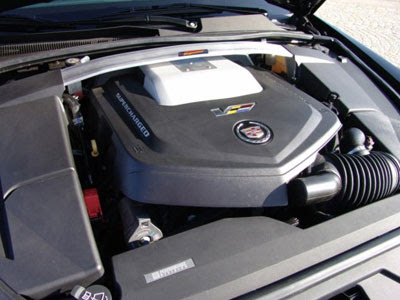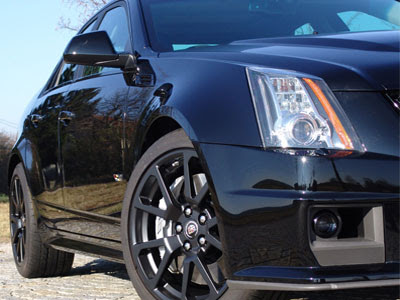GeigerCars.de, a German tuner specialized in North American cars, has launched an upgrade program for the Cadillac CTS-V. Despite its German location, Geiger Cars shows a great passion for tuning American cars. Instead of getting even more power and torque out of neighbouring brands like the Audi RS 6, the BMW M5, or the Mercedes-Benz E 63, Geiger chose to cross the Atlantic and create a monster out of a beast.
The performance saloon segment has for years been the exclusive domain of German manufacturers, for vehicles like the Audi RS6, the BMW M5 or the new Mercedes E63 AMG set the bar so high that most others don't even try to compete. So it's all the more surprising that the American Cadillac of all brands has suddenly hit back with the CTS-V, a lighting ride which has left a good many journalists pale-faced and shaken after test drives. 564 series HP and a massive maximum torque of 747 Nm are a clear challenge to Munich, Ingolstadt and Stuttgart.
What is more, Cadillac is now marketing the CTS-V in Europe for 74,400.00 euros - which needless to say leaves its German competitors trailing on the price-performance front.
Tradition, as everyone knows, is an obligation to deliver. That is why GeigerCars.de is offering special performance tuning for the Cadillac CTS-V, timed to coincide with the American performance saloon's European launch.
The four-door Cadillac with the tapered bonnet, The Cadillac CTS-V already comes packed to the hilt with a supercharged 6.2-litre LSA V8 based on the LS9 V8 from the Corvette ZR1. In its raw form it makes 415kW (564hp) at 5900rpm and 747Nm of torque. Not content, Geiger engineers upped the charge pressure releasing 455kW (619hp) and 850Nm of torque - a level few sports cars can match, and called it Brute Force. Drive is still thrusted upon the 6-speed gearbox and the rear wheels, although fifth and sixth gears are shortened. Top speed is rated at over 330km/h (205mph).
One thing is for sure: the Geiger Cadillac CTS-V shoots into action in all situations and keeps a joyful grin on its driver's face in every one of its manual gears. Not only that, but its optimised chassis means the CTS-V offers the perfect balance between long-distance comfort and an uncompromising hunger for curves and speed. In the face of such American sports perfection, we can only say "hats off"!". Geiger gives assurances that the car is a good compromise between a long-distance cruiser and a sharp, agile cornering machine. It can be had for €84,900, just €10,500 more than what Cadillac charges for the standard vehicle in Europe
Technical data, Geiger Cadillac CTS-V :
Engine: 6.2 liters V8 with compressor, increased charge pressure
Power: 619 HP at 5900 rpm
Max. torque: 850 Nm at 4000 rpm Bore x stroke: 103.2 x 92.0mm
Drive: rear-wheel drive
Gears: 6-gear transmission; 5th and 6th gear shortened
Brakes: ventilated disc brakes at front and rear
Top speed: 330km/h
Price: 84,900.00 euros














